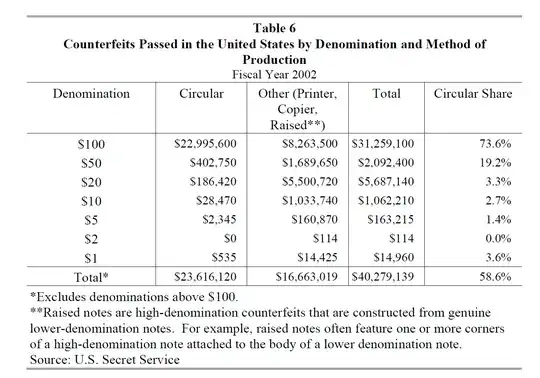TL;DR: $100 notes are counterfeited more overall, but there are more low-quality $20 forgeries than low-quality $100 forgeries (by count, but not by face-value).
The study Estimating the Volume of Counterfeit U.S. Currency in Circulation Worldwide: Data and Extrapolation contains a long evaluation of the problem.
Unfortunately, due to an unexplained error, the tables are omitted.
Through private communication with the lead author, Dr Ruth Judson, I have obtained another copy of the report. She states:
The wording at some points might vary slightly, but the tables should be the same.
The study explains the term "circular":
“Circular” notes are
those that are assigned classification numbers by the U.S. Secret Service for further
investigation. They are typically of higher quality than the other categories of counterfeit notes,
which include those printed on office copiers or computer printers or other relatively crude
methods.
In Table 6, we see the essential information:

Remember that, $1,000 worth of $20 notes is five times more notes that $1,000 worth of $100 notes.
From this table we can see that when it comes to higher-quality "circular" counterfeits, the $100 notes dominate, even after multiplying five. For the lower quality forgeries, there are more $20 notes, but they don't add up to as much value as the $100 notes.
Adding both groups together, the $100 notes win when it comes to count and value.
